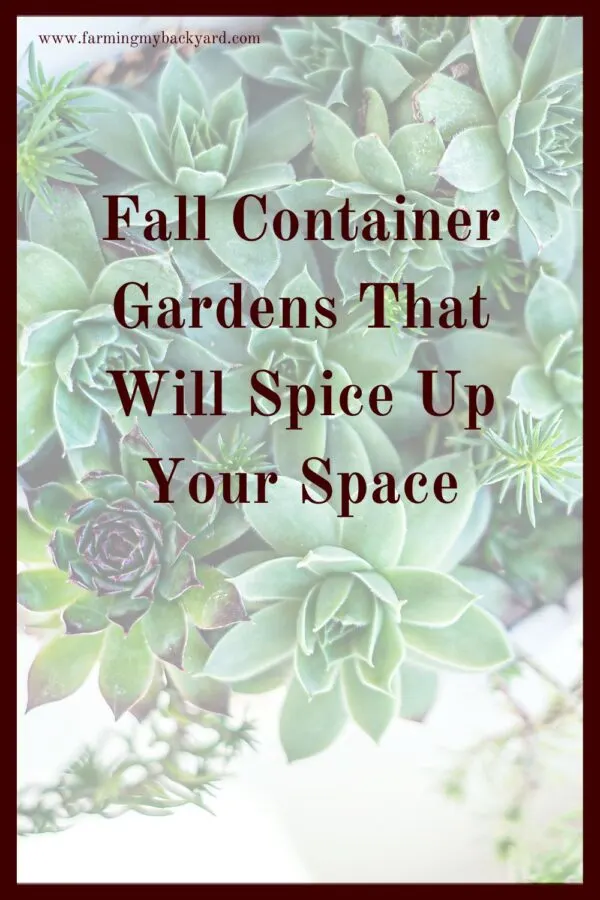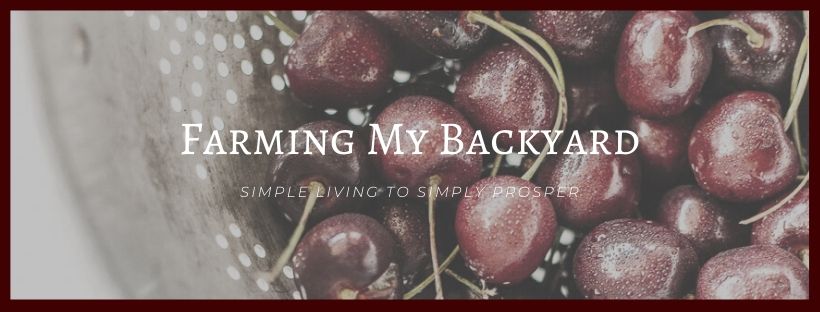Spring and summer contain a bounty of beautiful and useful plants. How can you keep that green, lush look going all year? Here are some ideas for fall container gardens to keep your patio and yard attractive even after the garden is gone.

Best pots for fall container gardens
Lightweight plastic and terracotta pots most likely will not survive through the winter, and they won’t do much to protect your plants either. The Spruce recommends using sturdier pots, and elevating them so they don’t freeze to the ground.
Related Posts:
How To Make The Best of a Small Garden
5 Beautiful Plants For Your Garden That Bees Love
How to Grow Awesome Microgreens Without a Garden
Growing Plants from Kitchen Scraps Is Surprisingly Easy
Making Up Potting Bags: DIY Potting Bag Tutorial
How to Make an Upcycled Pallet Planter for Cheap
I recommend planting into stone, cement, or metal containers. And of course having a fun container is half the entertainment of a great container garden. Don’t be afraid to try something and funky and unconventional. For example, use a hollowed out pumpkin as a (short-lived) pot!
Add Height
Any time you plant a container garden, it’s a good idea to use a variety of heights to make it more visually interesting. Many ornamental grasses are cold hardy and can last through some freezes. These will add height, texture, and sometimes color to your container garden.
If you don’t have any ornamental grasses, you can also add in attractive or striking branches into your container garden. This is unconventional, but definitely can give a fall flair to your patio.
You can also include vines or other plants that will give a draping effect. You can use sweet potato vines until the first hard frost. Other good choices for your bottom layer are moss, lemon balm, or Italian oregano.
Trailing succulents such as stonecrop also are a nice touch. They are sometimes known as sedum, and also have beautiful flowers. Hen and chicks won’t trail, but they can fill in any gaps nicely.
Fall container gardens should be colorful

There are some gorgeous kale and cabbage varieties available. They are often called ornamental, and can have a great range of colors. Both cabbage and kale don’t mind those chillier days.
Lambs ear is another cold hardy plant that can add a nice contrast to your more colorful selections. Sages, especially ornamental ones like mexican brush sage will keep their color during the fall, and can also add a nice texture to your container garden.
Flowers that can thrive in the autumn include mums, marigolds, viola, pansy and sweet alyssum. These also come in a variety of colors, which can give you lots of color schemes to play with.
You can also include beautiful saffron. Saffron is not terribly difficult to grow, but it is very expensive to buy from the store as a spice, because it must be hand harvested only once a year.
It also makes a great conversation piece when you grow it. My husband greatly enjoyed showing everyone around his saffron bed at our Portland homestead.
Another fun option for a burst of color in an cold weather container garden is peppers. They won’t last past the first hard frost, but from the end of summer until then they can be a fun plant to include.
Don’t let winter ruin the fun
Just because the first frost has killed off a couple of the plants doesn’t mean it’s time to call it quits. You can fill in blank spaces in your container garden by setting decorative gourds in those spaces. Evergreen branches work nicely as well. Rosemary looks great and smells wonderful.
A few weeks before your first frost, stop fertilizing. Your container garden will have a better chance of surviving if it doesn’t have tender new growth on it. Keep watering it though!
If you have a very cold climate, you can bring your container garden indoors to help it last longer. Alternatively, you could also replant the perennials into the ground, where the temperature is more stable.
Have you planted a fall container garden? What are your favorite plants to include? Share in the comments!

Want To Raise Happy Chickens?
Subscribe for our newsletter and get the free email course Intro To Backyard Chickens as well as a free printable checklist to walk you through step by step!
